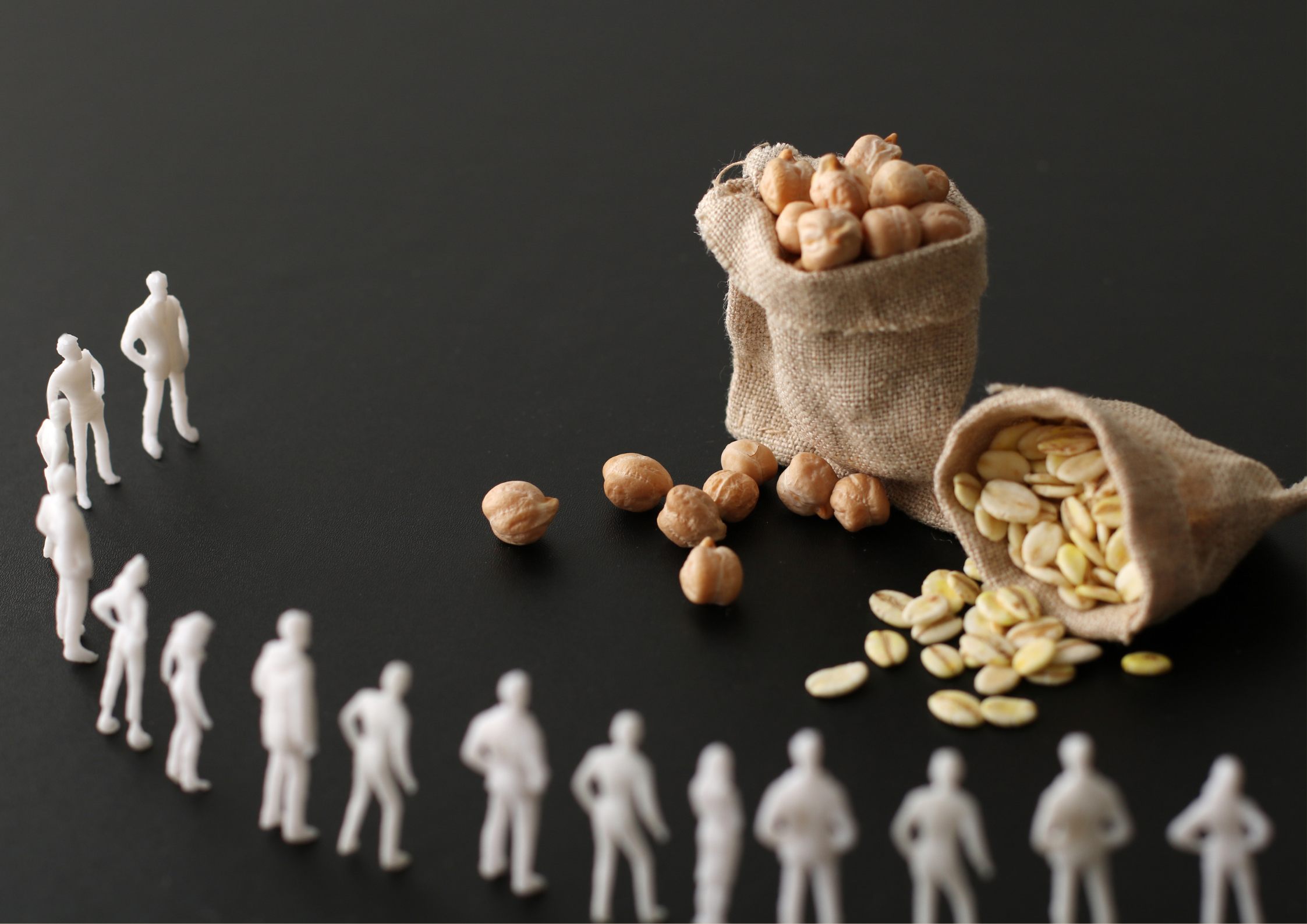
Russia’s invasion of Ukraine has deepened the global food crisis which has already hit hard due to the Covid-19 pandemic and resulting supply chains disruptions. There was a sharp spike in grain and fertilizers prices and their shortages on African and Middle East markets. Both Ukraine and Russia are leading producers and exporters of these products. The long-term blockade of Ukrainian Black Sea ports as well as difficulties in handling food sales have increased areas of malnutrition or even hunger on the world map, in particular in those countries which also previously coped poorly with providing food to their citizens. Early 2022, 276 million people were suffering from severe hunger in 81 countries where the World Food Program (WFP) works. That’s an increase of 126 million people from before the Covid-19 pandemic. The WFP predicts that if the conflict in Ukraine continues, severe hunger will increase by a gigantic number of 47 million people in the countries where the UN agency operates. The effort of the United Nations, many countries and organizations is now focused on preventing a major humanitarian catastrophe.
According to FAO (Food and Agriculture Organization) data, in 2021, Russia and Ukraine were among top three world exporters of wheat, barley, maize, rapeseed and rapeseed oil, as well as sunflower seeds and sunflower oil. The Russian Federation is also the world’s largest exporter of nitrogen fertilizers, the second leading supplier of potassium fertilizers and the third largest exporter of phosphate fertilizers. Likewise, Belarus plays an important role in global fertilizer supply chains.
The Black Sea ports blockade, devastation of Ukrainian agricultural infrastructure and restrictions on grain exports imposed by Russia will have a negative impact on the global grain market also in the years to come. The shortages can only be partially offset by supplies from alternative sources. Also in the long run, the ability of other countries to increase production and exports will be limited by the necessity of high investments which are not feasible in the times of crisis. The FAO estimates that food prices in global markets may rise by 8-22 percent.
The UN warns that the cost of food is already 42 percent higher than in 2014-2016. Meanwhile, after the outbreak of the war in Ukraine, the FAO food price index exceeded the level of the fuel crisis in 1973 and rose to the highest level since 1961. This means a drastic increase in the number of people in need of humanitarian aid while international organizations experience difficulties in purchasing food. According to UN estimates, 1.7 billion people worldwide, or one fifth of the world’s population, are exposed to at least one of the three effects of the war in Ukraine: rising food prices, rising energy prices or a severe financial crisis.
IMPACT OF THE UKRAINIAN WAR ON THE MIDDLE EAST
World Bank research shows that although only 6 percent of the world’s population lives in the Middle East and North Africa, as much as 20 percent of the region’s population is at risk of suffering from food shortages. Of these countries, Lebanon, Syria and Yemen are the most vulnerable, with only a small supply of grain stocks and severe economic crisis or civil war. Before Russia’s invasion of Ukraine, Lebanon imported as much as 75 percent of all wheat from that country and from Russia.
The outbreak of the war and the blockade of the Black Sea ports have left thousands of low-income residents of Lebanon malnourished, and the plight of the country hit by the economic catastrophe has been exacerbated by a sharp rise in fuel prices. It is worth noting that food prices in Lebanon in soared already before the war by 400 percent compared to 2019, and according to UN data, as many as 80 percent of Lebanese live in poverty. Unfortunately, this number is constantly increasing. Another nation in a very difficult situation is Syria. Data obtained by the international humanitarian organization Mercy Corps shows how the energy crisis is adversely affecting the availability of bread in Syria, with prices in private bakeries having increased by almost 100 percent.
Another Arab country, Jordan, although it used to import almost 40 percent of wheat from Russia and Ukraine (FAO data) it managed to secure grain stocks for about 15-18 months ahead of the outbreak of war. Gulf nations such as Oman and Saudi Arabia are heavily dependent on grain purchases in Russia and Ukraine (Oman – 48 percent, Saudi Arabia – 54 percent), but the economic potential of both countries allows them for purchases even at a higher price from other suppliers. They are also trying to deal with food supply issues by renting farmland in other countries and by investing in the regeneration of local semi deserts.
Another Middle Eastern nation – Pakistan – has been struggling with a huge economic crisis for many years. At the same time – due to competitive prices – it has been purchasing about 73 percent of wheat from Ukraine (1.2 million tons) and Russia (0.92 million tons). Food import costs during the pandemic accounted for 16% of Pakistan’s total import expenditure. After Russia’s invasion of Ukraine, the share of food increased to over 20% and the import of wheat (and cooking oil) from Ukraine was put at risk. Local crops production have suffered severely due to rising fertilizer prices, heat waves, drought, and – in some provinces – floods. The government in Islamabad is trying to improve the food situation through open international tenders but soaring grain prices on the world markets hinder its efforts. The food crisis might cause malnutrition for hundreds of thousands of the country’s inhabitants.
THREAT OF HUNGER IN SUB-SAHARAN AFRICA
The food security of as many as 17 Sub-Saharan African countries depends on imports from Russia and Ukraine. Before the war, the scale of imports ranged between 35 percent (Kenya, Sudan), 55 percent (Cameroon, Senegal, Djibouti), up to 93-100 percent (Somalia, Eritrea). Local farmers are unable to increase food production, in particular wheat, due to the more frequent natural disasters affecting Sub-Saharan Africa as a result of climate change (desertification of farmlands) as well as a sharp increase of artificial fertilizers prices (from 250 to 300 percent) in the region.
Globally, prices of artificial fertilizers have increased by 80 percent already in 2021. This was due to a break in supply chains caused directly by the armed conflict in Ukraine but also by decisions of other producers. China has limited fertilizer exports to protect its own farmers in a crisis caused by the soaring of gas and coal prices. Both fossil fuels are the basic raw material for ammonia needed to produce nitrogen fertilizers. Similar problems apply to potash fertilizers produced with the use of potash.
According to World Bank assessments, shortages of potash supplies, and thus the prices of potash fertilizers, increased after new sanctions against Belarus and Russia imposed after Russia’s invasion of Ukraine. The availability of artificial fertilizers is currently at its lowest since the 2008 global food crisis, contributing to a reduction in cultivated land. Above all, however, the food crisis worsened due to the blockade of the Ukrainian Black Sea ports by Russia and restrictions of grain exports imposed by Moscow. This resulted in a drastic reduction in the supply of grain and thus a surge in food prices. The countries most affected are: Ghana (122 percent increase), Senegal (110 percent), Uganda (107 percent), Nigeria (106.5 percent), Kenya (104 percent) and South Africa (102 percent). A special case is Nigeria, where the effects of the war in Ukraine hit consumers as a result of the global energy crisis. The West African nation is one of the world’s largest oil producers and the largest in Africa, with a daily production of 1.42 million barrels. The problem, however, is that Nigeria has only four oil refineries, so almost all of its fuel needs are met by imports. The huge jump in world prices for fossil fuels has had an impact on their price in Nigeria (an increase of more than 100 percent) and has led to a big shortage of these products which affects the costs of transportation and food production.
Therefore, the war in Ukraine has had a very negative impact on the level of both food and resource security in Africa, which was already low before the conflict. It is worth noting that, according to the calculations of the International Monetary Fund, 40 percent of all household expenditure in sub-Saharan Africa is spent on food, while the World Bank estimates that poor families in this region spend as much as 75 percent of their income on food. In Western countries, the share is 10-17 percent. The current crisis is exacerbating an already difficult situation. In 2020, as a result of the pandemic, drought, floods and internal conflicts, malnutrition and hunger in that region of the world was suffered by 21 percent of population, which in absolute numbers means as much as 282 million people. This is an increase by 46 million affected persons compared to the pre-2019 period. Particularly difficult situation is in the Horn of Africa region (Djibouti, Somalia, Sudan, South Sudan, Ethiopia, Uganda and Kenya), where – according to UN figures – more than 37 million people suffer from severe hunger, including seven million severely malnourished children.
THE BLACK SEA GRAIN INITIATIVE
Certain hope was brought by the so-called Black Sea Grain Initiative, i.e. the agreement concluded on July 27, 2022 in Istanbul with Russia and Ukraine, thanks to the efforts of the UN and Turkey. It assumed the resumption of Ukrainian grain exports from three ports: Odessa, Chornomorsk and Yuzhne. A total of 20 million tons of grain were blocked by Russia in Black Sea ports. However, that agreement has not been fully implemented as the ports mentioned can only use about 25-30 percent of their capacity, and the Ukrainian side accused Russia of deliberately blocking its implementation. The controversy also concerned 150 grain ships that stuck in the Sea of Marmara in October due to prolonged Russian inspections. Moscow, on the other hand, accused Kyiv that about half of grain shipments are directed via Ukraine to Europe, and not to the poorest countries. The deal was subsequently suspended but thanks to the Turkish Government’s efforts the Kremlin has revoked that decision. Despite the difficulties Russia has made, Ukraine has so far managed to export more than 9 million tons of grain and other foodstuffs on board 379 ships via the Black Sea under the July agreement.
Author: Bruno Surdel, PhD, analyst, Centre for International Relations
[evc_interactive_banner type=”classic” custom_link=”url:https%3A%2F%2Fmastersandrobots.tech%2F|||”]




